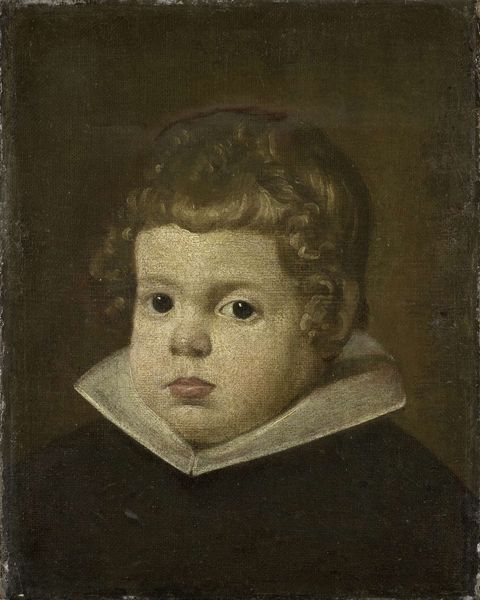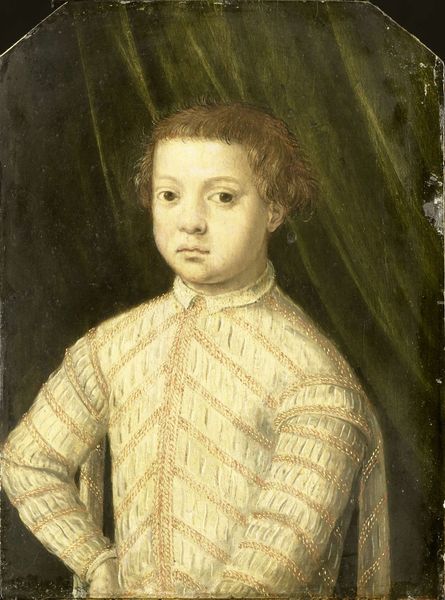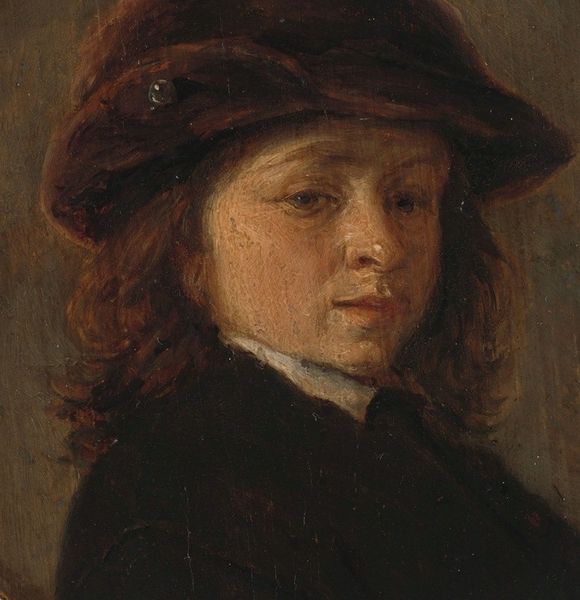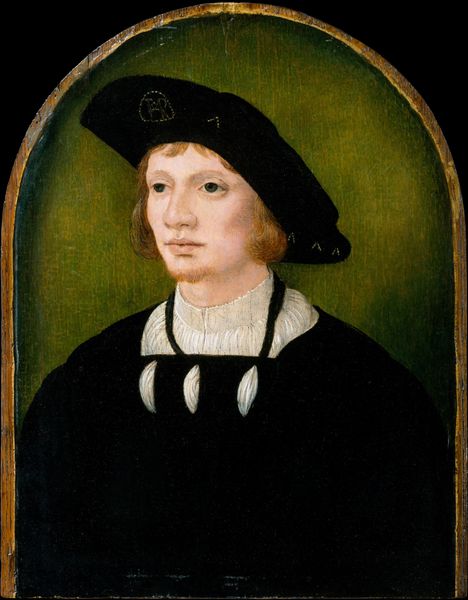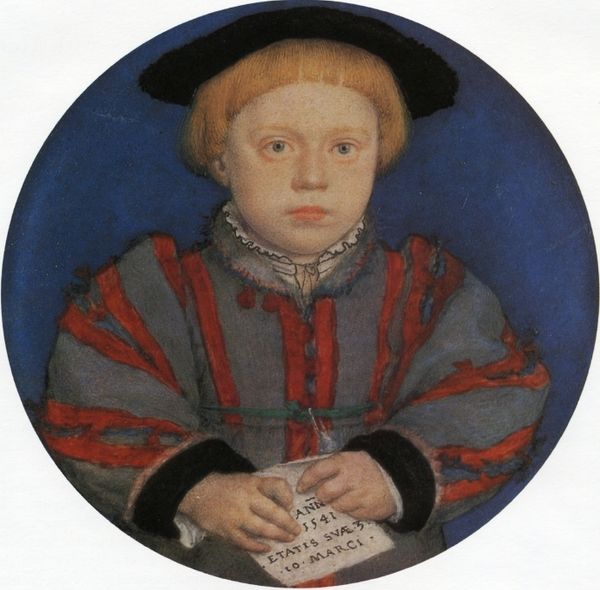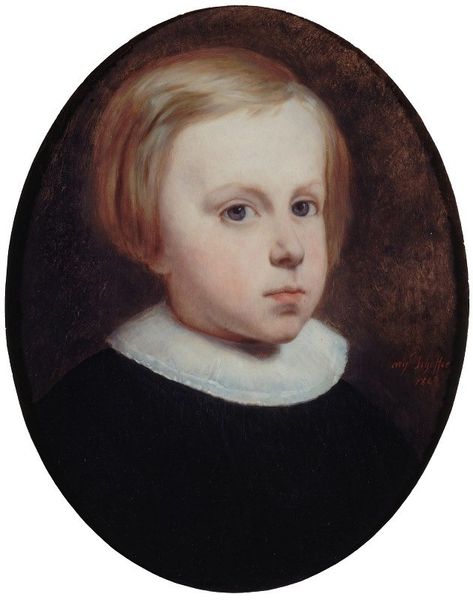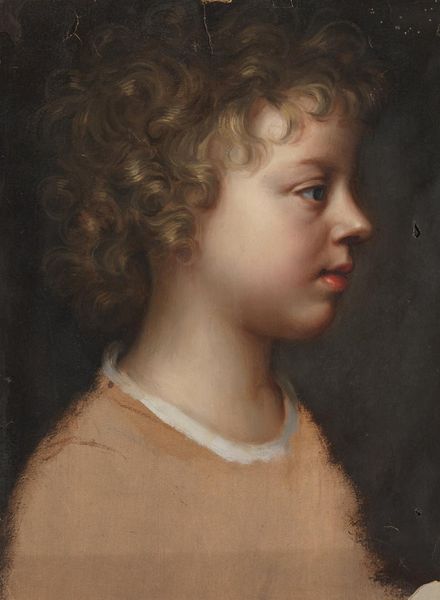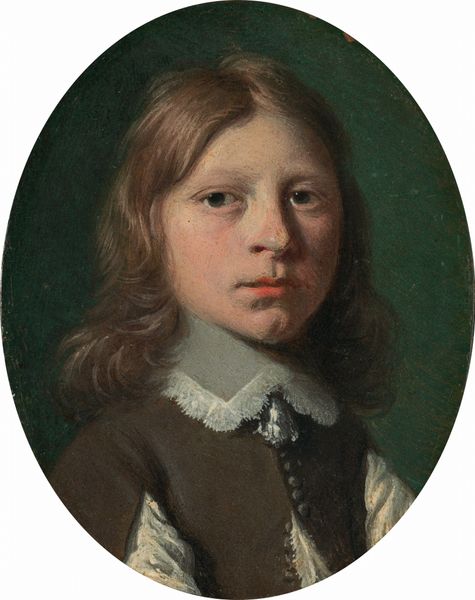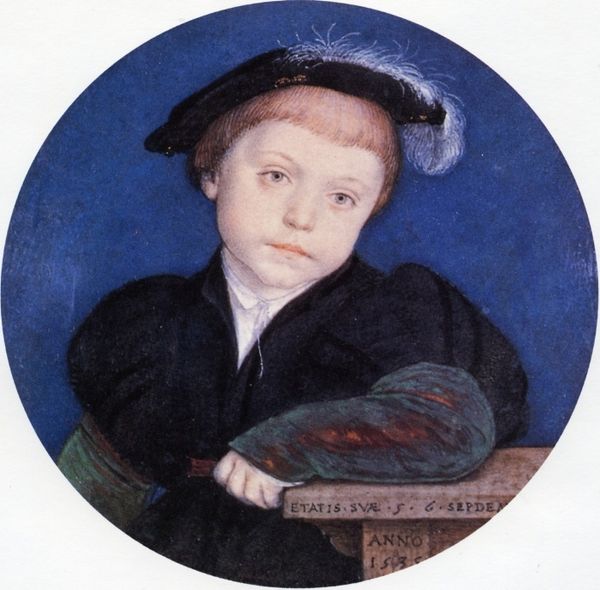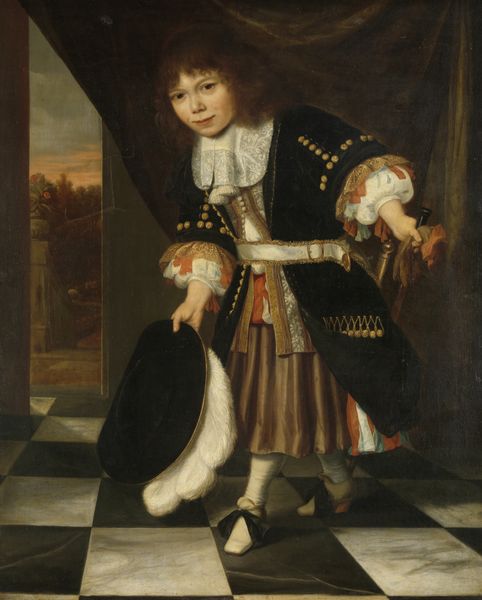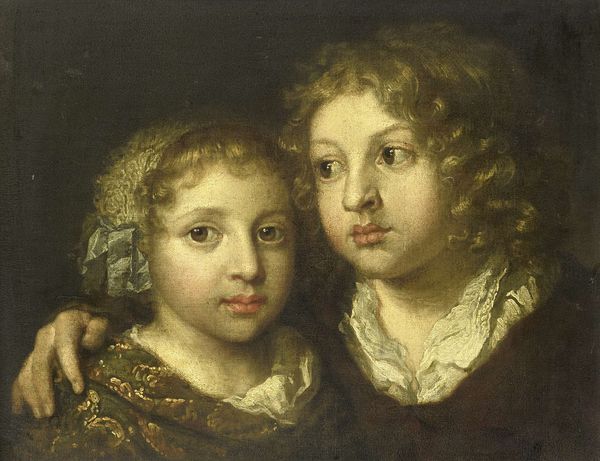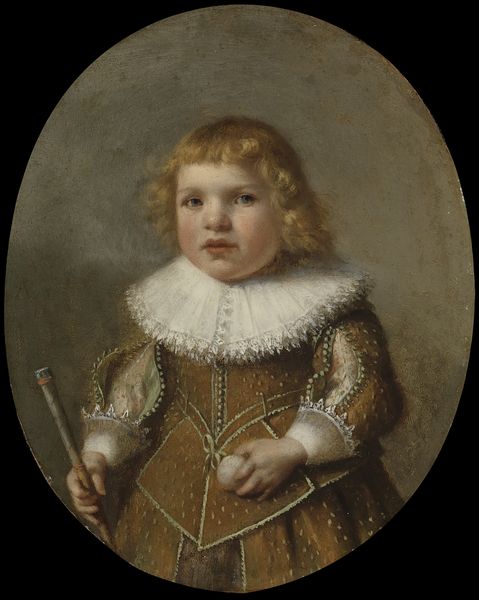
painting, oil-paint
#
portrait
#
painting
#
oil-paint
#
figuration
#
11_renaissance
#
famous-people
#
history-painting
#
northern-renaissance
#
academic-art
Copyright: Public domain
Curator: This is a painting attributed to Mabuse, showing Prince Hans of Denmark, Norway, and Sweden. Painted during the Northern Renaissance, it is an oil painting that beautifully encapsulates a young royal figure. Editor: My initial feeling is one of formality, but also vulnerability. Look at the almost cherubic features of the prince, contrasted with the dark, sober attire and serious expression. There is such palpable tension! Curator: Absolutely. Consider the historical context; the depiction of royalty was meticulously crafted to convey power and legitimacy. While Mabuse aimed for that with Prince Hans' dignified pose, the soft execution subtly hints at his youth. Editor: It's the soft execution precisely that humanizes him. His rounded cheeks and gentle eyes are in sharp contrast to the weighty symbolism usually attached to royal portraits. What does this tell us about power, inherited versus earned, especially at such a tender age? Curator: I think it reflects evolving social roles and expectations for royal children. Portraits served as political tools, to display strength and stability. But with artists humanizing subjects we can view more contemporary attitudes toward youth and leadership. This breaks with the older conventions of power and decorum within the portrait. Editor: True, we have to remember who would see the portrait. Did it function more as a symbol, perhaps for diplomatic or familial exchanges? Or did its creation speak to a particular emerging ideology within the Danish court? His gendered presentation, too—considering the expectations placed upon him from birth—adds to this complicated reading. Curator: Portraits like these often cemented alliances or demonstrated dynastic strength. Mabuse's careful craftsmanship is more than surface deep, capturing changing times within royalty, specifically for this painting. Editor: Well, revisiting the prince’s gentle expression invites reflection. How might he have interpreted the weight of expectation, the performative demands on him? The canvas silently challenges the historical framing of immutable power. Curator: Yes, I think viewing such portraits prompts conversations on power and individual experience. Editor: It certainly broadens what it means to examine these historical images within evolving critical frameworks.
Comments
No comments
Be the first to comment and join the conversation on the ultimate creative platform.
